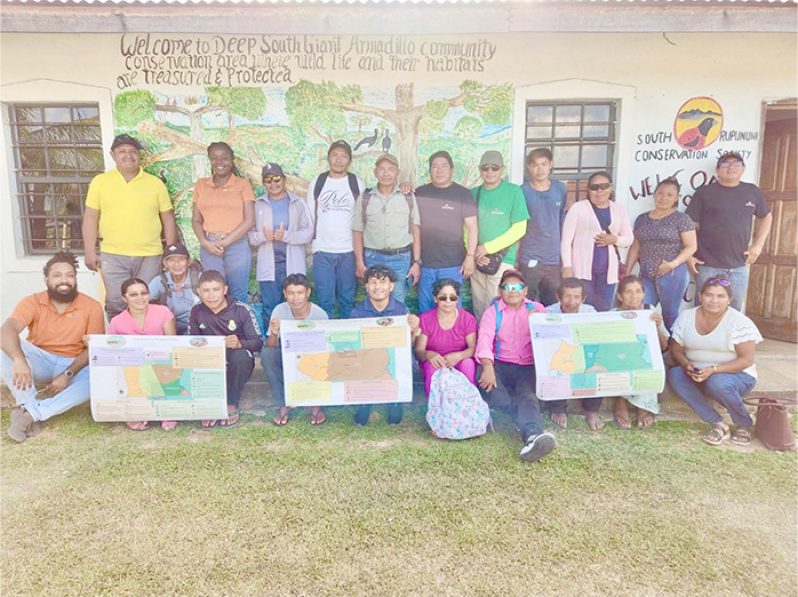—historic indigenous collaboration protects 150,000 hectares of forest and savannah
IN a landmark achievement for community-led conservation, the Indigenous villages of Shea, Maruranau, and Awarewaunau in Guyana’s Deep South Rupununi have joined forces to create the Deep South Giant Armadillo Conservation Area, safeguarding more than 150,000 hectares of pristine forest and savannah.
This new conservation area — larger than Hong Kong and twice the size of the Cayman Islands — will serve as a refuge for the Giant Armadillo, Giant Anteater, and countless other species that depend on these ecosystems for survival. The initiative represents a powerful fusion of ancestral knowledge and modern science, aimed at protecting biodiversity while strengthening Indigenous culture and livelihoods.
The collaborative effort is being supported by the South Rupununi Conservation Society (SRCS), Conservation International–Guyana, the Global Environment Facility (GEF) Small Grants Programme, Jacksonville Zoo, and the Audubon Nature Institute.
The Global Biodiversity Alliance (GBA) has hailed the initiative as a “shining example of people and nature thriving together,” commending the Deep South communities for their visionary leadership. According to GBA, the villages of Shea and Maruranau have pledged GY$2.5 million annually from Guyana’s Low Carbon Development Strategy (LCDS) to fund conservation, research, and environmental education activities.
“This is Indigenous leadership at its best — proof that when people and nature thrive together, the planet thrives too,” the GBA noted.
YEARS OF DIALOGUE, ONE SHARED VISION
The SRCS, which has been working with these communities for years, described the conservation area as the culmination of extensive dialogue and cooperation among local leaders.
“Using the Giant Armadillo and Giant Anteater as symbols of both value and vulnerability, the communities arrived at a shared solution — setting aside safe spaces where wildlife can thrive free from farming or logging,” the SRCS said. “The surrounding lands will continue to be managed for long-term coexistence between people and nature.”
At a landmark Inter-Community Agreement signing ceremony, Toshao Daniel Aguilar of Maruranau, Toshao Berlinda Alfred of Awarewaunau, and Councillor Marlon Augusto of Shea officially pledged to: Continue community-led biodiversity research and conservation; Monitor their lands and protect wildlife habitats;
Educate youth and residents on sustainable resource management; and
Implement their Village Sustainability Plans, featuring new land-use zones and guidelines to ensure harmony between people and wildlife.
Representatives of SRCS, Conservation International, and the GEF Small Grants Programme witnessed the signing, marking a new chapter in Guyana’s conservation history.
FINANCIAL AND TECHNICAL SUPPORT
Conservation International–Guyana has committed GY$1 million per community to further these shared goals. The initiative forms part of the project “Community-managed Research and Conservation of Giant Anteaters and Giant Armadillos in the Eastern Deep South Rupununi” (2023–2026), led by Angelbert Johnny (Project Coordinator, SRCS) and Erin Earl (Technical Supervisor, SRCS).
Funding support has been provided by Conservation International–Guyana, the GEF Small Grants Programme, Jacksonville Zoo, and the Audubon Nature Institute, with technical guidance from the ICAS Giant Armadillo Project in Brazil.
The creation of the Deep South Giant Armadillo Conservation Area stands as a historic milestone — one that highlights the power of Indigenous collaboration, local stewardship, and scientific partnership in protecting Guyana’s natural heritage.
As the SRCS emphasised, “When Indigenous knowledge, science, and shared vision unite, both people and nature thrive together.”



.jpg)










